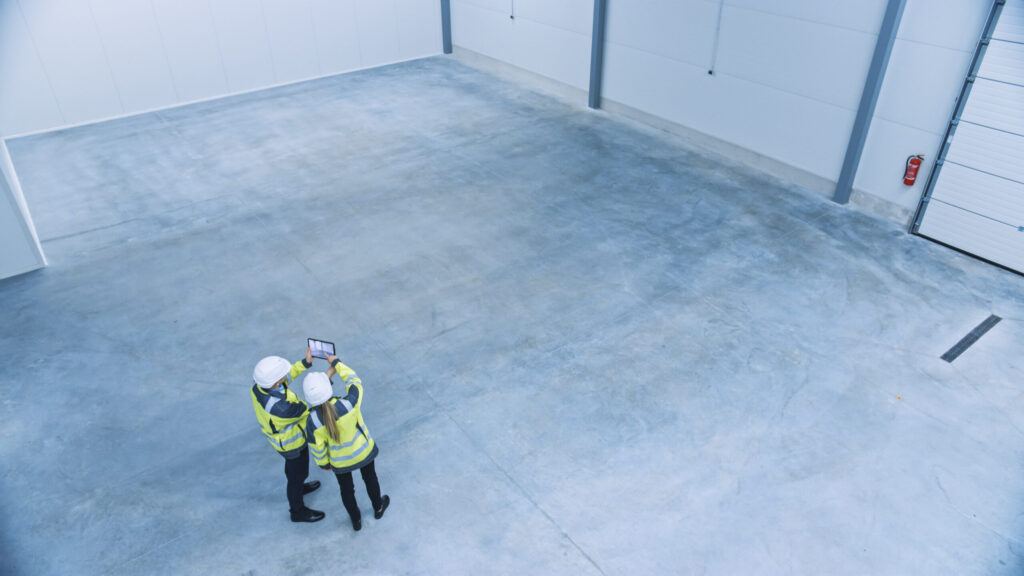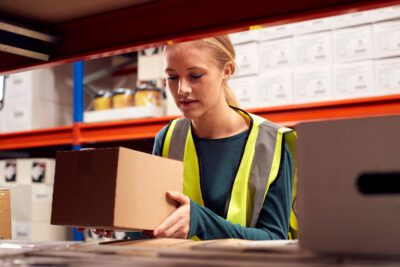Webinar Registration: The P2G Advantage
Webinar Registration: The P2G Advantage LEARN MORE
Automate Greenfield Warehouses Right from the Start with Robots
Mary Hart, Senior Content Marketing Manager

Eager to expand your warehouse and order fulfillment capabilities and have the funds to create the facility of your dreams from the ground up? Congratulations! Greenfield warehouses can be a solid way to optimize your entire warehouse operations from wall to wall — from material arrival at your docks to inventory storage; picking to replenishment; sorting to shipping; and more.
However, while greenfield projects provide tempting opportunities to optimize your operational workflows, you also want to avoid pitfalls that would make you wish you’d stayed in your former facility.
Many warehouse managers plunge into greenfield projects thinking of the technological and operational benefits (which are many) without fully considering any practical hurdles. Extensive upfront planning is required to avoid delayed deployments and unmet expectations. In particular, factors such as long lead times for warehouse automation equipment, shifting business conditions, and integration challenges can slow progress if not properly addressed.
Flexibility is Key
Consumer expectations and order volumes change on a dime from season to season and even day to day. What you need to keep in mind when designing your greenfield warehouse is that what’s in demand this quarter may fizzle out in six months when the new hot toy or makeup brand emerges from TikTok videos. Don’t lock yourself into fixed systems like conventional conveyors and sorters that can’t pivot with fluctuations in order volumes. Instead, design flexibility into your greenfield plans.
As one way to stay both flexible and scalable in your warehouse, you can use the robots-as-a-service (RaaS) subscription model to add more autonomous mobile robots (AMRs) in your peak season and then send them back when they’re done or keep them for picking or other use cases like returns. In contrast, altering fixed automation systems like conveyors and sorters require significant additional construction and can’t just be sent back when you’re done with them. AMRs provide built-in flexibility and scalability to modify your warehouse operations over time.
Watch for Material Delays
When companies are working on a true greenfield site, they’re either managing the construction of a new building or working with an empty building that needs to be built out with storage racks, conveyors, packing stations, and more. It’s not as simple, though, as just calling up a company to purchase the materials you need and getting them right away. That may have been the case in years past, but not anymore.
With continued supply chain delays, don't expect to snap your fingers and have racks, conveyors, and equipment delivered instantly. Build in long lead times — we're talking months. Steel and many other material handling system components are taking longer to procure, which can cause conveyor companies to be backed up 24 to 28 weeks as an example. Integrators need longer lead times for installations at a time when demand is rapidly rising.
Instead, look for the type of flexible, non-fixed automation (like AMRs) that you can roll out now to start moving products out the door ASAP.
Design Past Day One
Sure, you have to get up and running fast, but also think about how you’ll be able to adjust on the fly to handle changing order volumes and peak seasons – and non-peak. The old saying goes that you don’t design a church just for the crowds on Easter Sunday because you won’t get those same parishioners the rest of the year. And the same holds true for your warehouse.
Instead, you need to plan for both your smallest orders and your largest at the same time. That’s not all that easy with heavy, fixed equipment that takes up space. How can you design your workflows and space to easily add mezzanines, new tech, etc. when needed? Look for adaptable automation solutions that have your back now and in the future.
Get Strategic Partners in Your Corner
You need collaborators who live, sleep, and breathe supply chain and can advise on layout, flow, and phased expansions — not just dump off equipment and leave you to figure it out. Having the right partners onboard gets you to maximum throughput faster.
Automate for Success
Incorporating flexible automation technologies, especially warehouse robots, into your greenfield plans can accelerate deployment timelines, enable phased rollouts as needed, and protect operations from potential delays.
Top AMR advantages for greenfield warehouses:
- Deploy in weeks vs. months for fixed systems
- Begin order fulfillment promptly while permanent infrastructure is still being built
- Optimize workflows from day one rather than waiting months for automation
- Drive rapid payback on investments
For example, our AMRs can start assisting your associates right away with transporting picked items and inventory replenishment instead of waiting months for system design, installation, and integration. This quick impact is invaluable instead of waiting for racks, conveyors, and sorters.
Automated greenfield warehouses offer a huge advantage to quickly and efficiently handle fluctuating order demands. However, long material lead times, shifting business landscapes, and deployment roadblocks make flexibility imperative. Incorporating automation — specifically AMRs — into your greenfield plans mitigates these risks and accelerates your operational and financial benefits. By kickstarting automation and remaining adaptable, robots enable greenfield sites to start strong and scale intelligently over time.
Talk to us to learn how our flexible warehouse and fulfillment center automation can maximize your greenfield site’s productivity and resilience.




